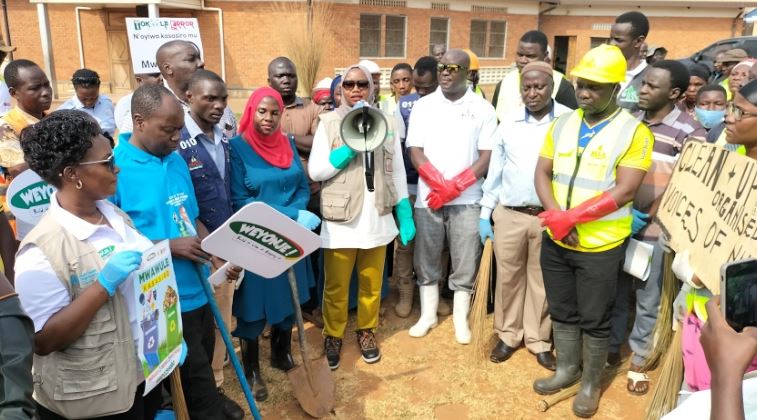Published on 09/08/2025
Uganda Railways Corporation (URC) has urged the government to allocate at least UGX 500 million annually for the repair and maintenance of the country’s railway network.
This funding would enhance train speeds, improve safety, and reduce the financial burden of road maintenance.

The appeal was made by URC Managing Director Benon Kajuna during a session with Parliament’s Committee on Commissions, Statutory Authorities, and State Enterprises (COSASE) on August 6, 2025, while discussing the Auditor General’s December 2024 report.

Kajuna emphasized the critical need for track maintenance, stating, “The government invests heavily in road maintenance, but similar funding for railways would reduce road wear and maintenance costs. Allocating UGX 500 million annually for urgent repairs will ensure safer and more efficient rail operations.”
This request comes amid concerns over Uganda’s deteriorating road infrastructure. Last week, Minister of Works and Transport Edward Katumba revealed that the national asset value of Uganda’s 6,312.1 km paved road network has depreciated from UGX 37.4 trillion to UGX 26.9 trillion, a loss of UGX 10.5 trillion, due to underfunding and deferred maintenance. He noted that 2,460 km (39% of the network) require urgent intervention due to structural distress caused by insufficient maintenance, increased traffic, and climate change.
According to the Ministry, periodic maintenance costs UGX 888 million per kilometer, but neglecting roads escalates them to rehabilitation status, costing UGX 2.59 billion per kilometer, three times the maintenance cost. Minister Katumba warned that further neglect could push roads into the reconstruction category, costing UGX 3.7 billion per kilometer. “Failure to address just 100 km of rehabilitation-ready roads could add a UGX 111 billion burden,” he cautioned.
During the COSASE meeting, URC unveiled plans to generate revenue through real estate development by leasing its vast land holdings, approximately 10,000 hectares across districts like Kasese, Kampala, Jinja, Tororo, Lira, Soroti, Gulu, Pakwach, Masindi, and Arua.
Kajuna explained, “We aim to partner with credible investors to develop this land, benefiting both URC and investors while retaining ownership. This strategy will reduce reliance on the national budget.”
URC also proposed adopting a railway levy, similar to systems in Kenya and Tanzania, charging a small fee per ton of cargo passing through ports like Mombasa or Dar es Salaam. “A levy of, say, one dollar per ton could accumulate significant funds for railway development and maintenance,” Kajuna said, noting its success in neighboring countries. “This is a sustainable way to financially support URC.”
Additionally, URC highlighted a UGX 900 million fuel debt and proposed a UGX 10 billion annual fuel reserve fund to stabilize operations. “We’ve presented this idea to the Minister of Works and Transport, who supports it,” Kajuna added.
To enhance efficiency, URC plans to prioritize staff training and collaboration with Kenya and Tanzania Railways. “Continuous engagement at the technical and CEO levels will help verify our assets in these countries. We’re also implementing performance contracts and training programs in operations, maintenance, and planning,” Kajuna said.
By investing in railways, URC aims to alleviate pressure on Uganda’s roads, reduce maintenance costs, and foster sustainable development through innovative revenue streams and regional partnerships.








